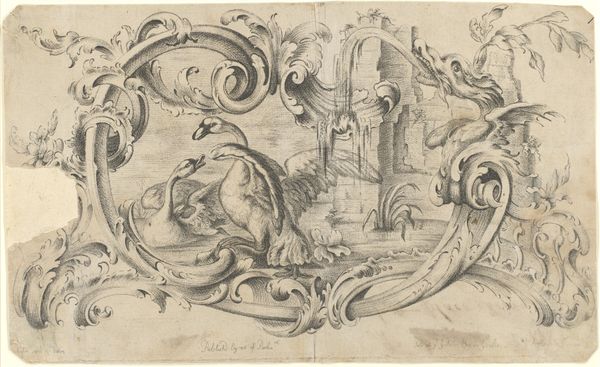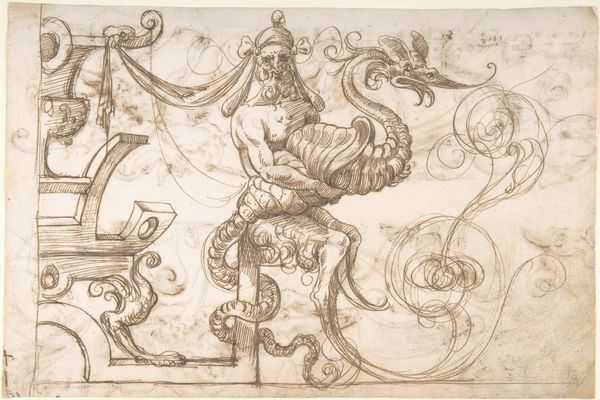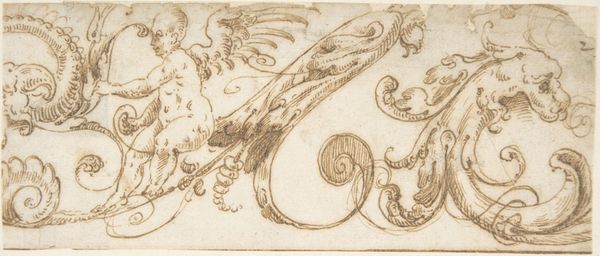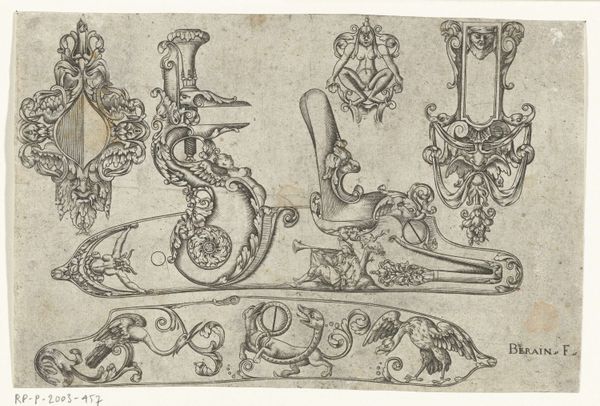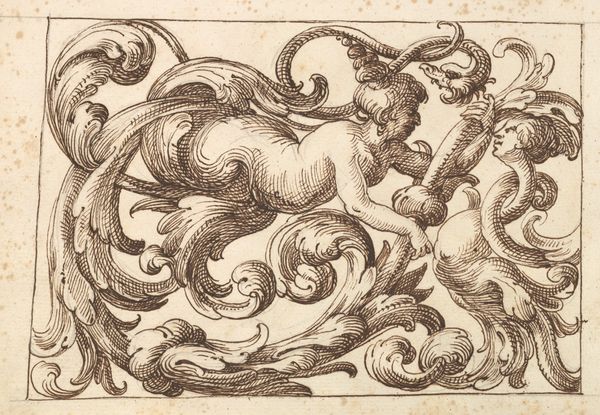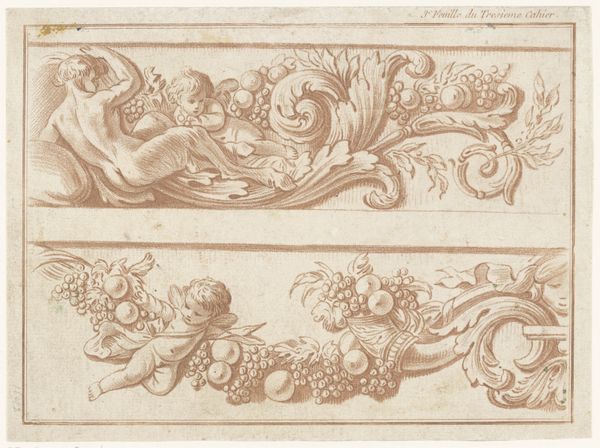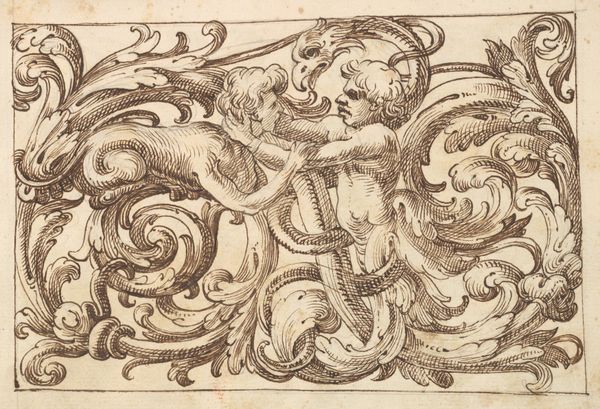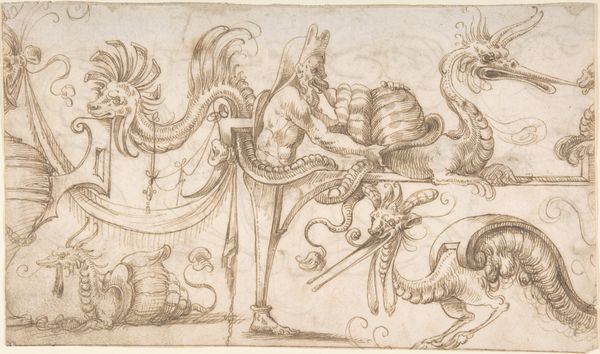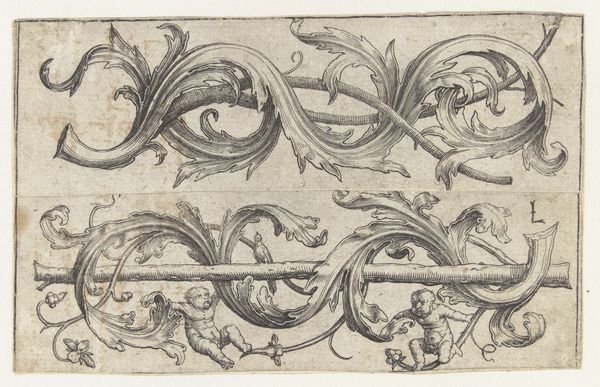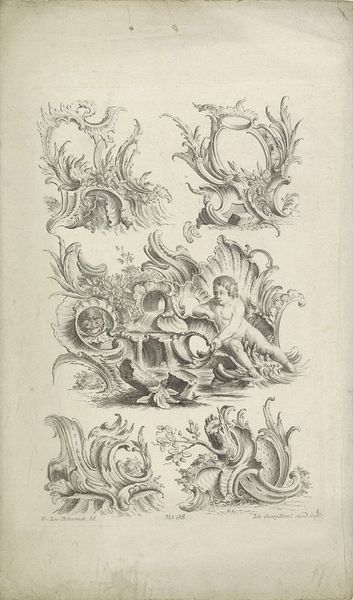
drawing, print, ink, pen
#
drawing
#
ink drawing
#
pen drawing
# print
#
pen sketch
#
figuration
#
11_renaissance
#
ink
#
pen
#
genre-painting
#
history-painting
#
italian-renaissance
Dimensions: 5-3/4 x 13-3/8 in. (14.6 x 34.0 cm)
Copyright: Public Domain
Editor: We’re looking at a drawing from the mid-16th century, "Design for a Frieze with Grotesques," created by Andrés de Melgar. It's rendered in pen and ink. The overall effect is whimsical, with all these bizarre, fantastical creatures intertwined. What's your take on this peculiar piece? Curator: Oh, this is delightful madness! I see a world unleashed from the purely rational. It reminds me of dreams, where logic takes a holiday and the absurd reigns supreme. The term "grotesque," mind you, wasn't always pejorative. During the Renaissance, these whimsical forms, born from rediscovering ancient Roman art, were all the rage! Imagine the artist sketching away, perhaps chuckling to himself, weaving these fantastical figures together like a visual tapestry. Notice how the ink creates depth and movement – does it remind you of anything? Editor: Maybe a particularly ornate fever dream? There’s a playful yet unsettling quality about it. Where would a frieze like this have been used? Curator: That’s the beauty of these friezes, really. They could be found almost anywhere! Public buildings, private homes, even furniture! A nobleman might commission something like this to show off his…shall we say, eccentric taste. Imagine it snaking its way across a grand hall, a conversation starter for bewildered guests. Editor: I never considered how "grotesque" could be fashionable. I suppose taste really does change. Curator: Indeed! It reminds us that art, like fashion, reflects its time. This drawing is a fascinating peek into the Renaissance psyche, a playful dance between order and chaos. A testament to imagination, don't you think? Editor: Definitely, a pretty fascinating way to see how artists played with boundaries back then. Thanks for that!
Comments
No comments
Be the first to comment and join the conversation on the ultimate creative platform.

